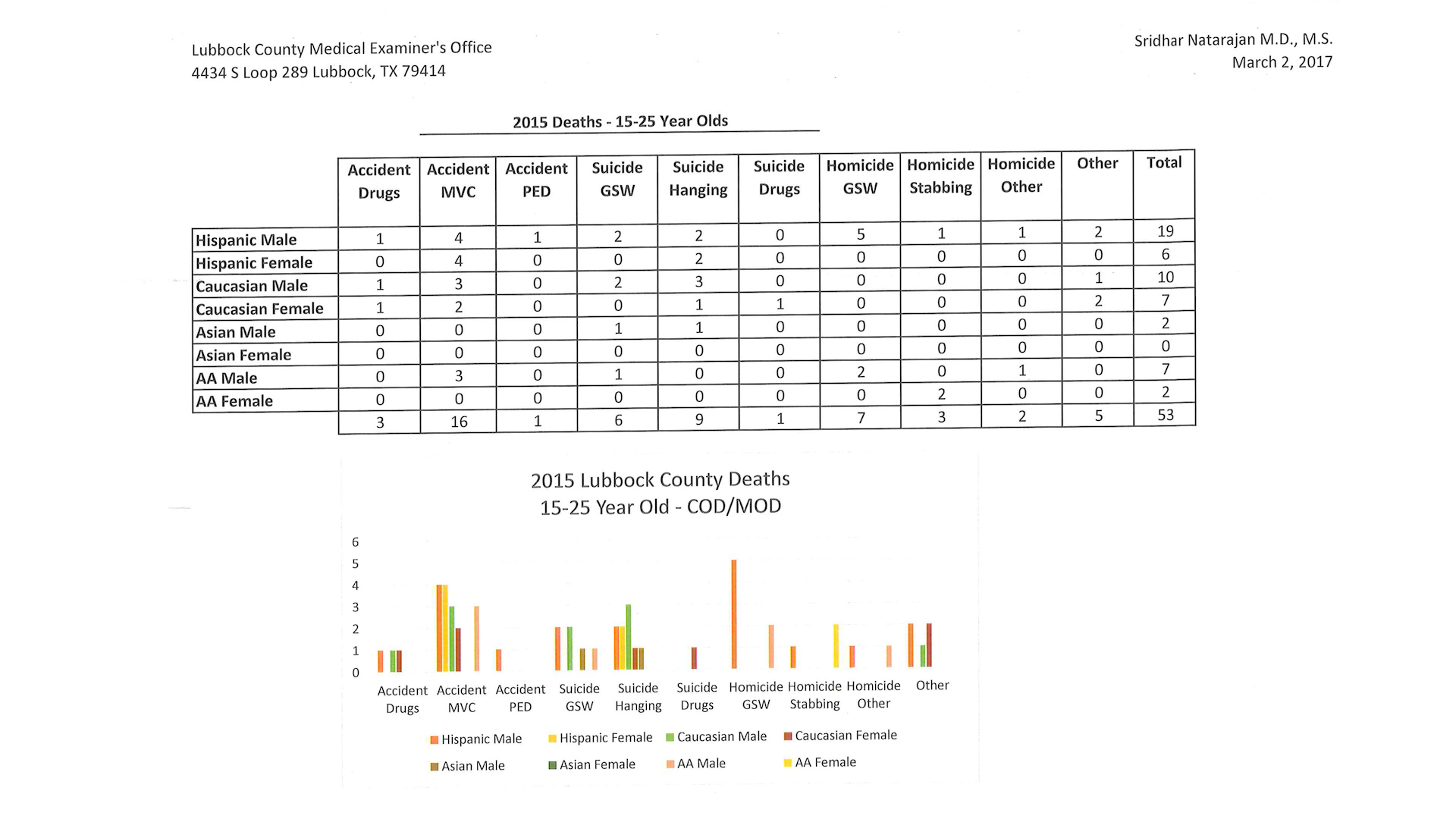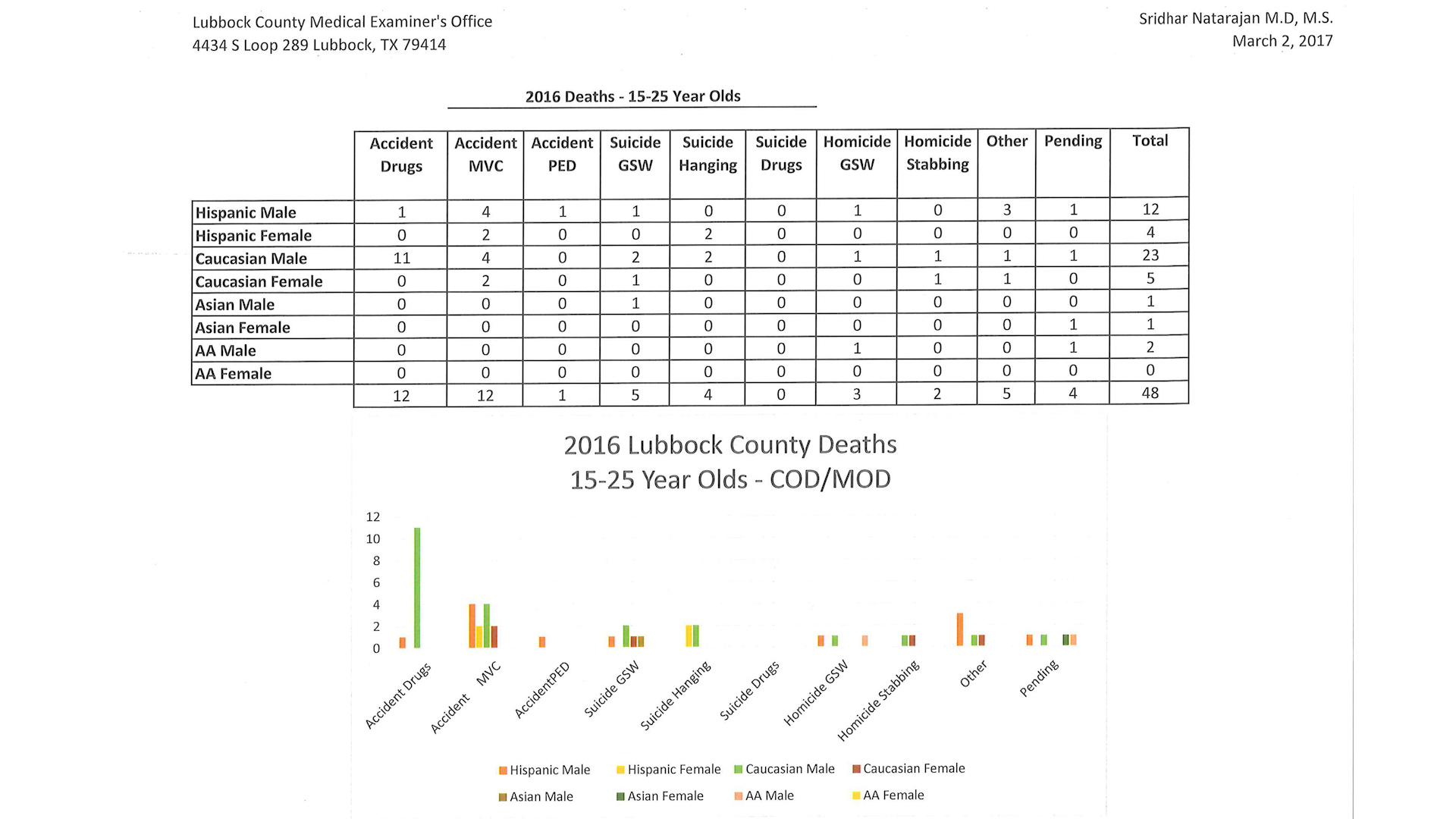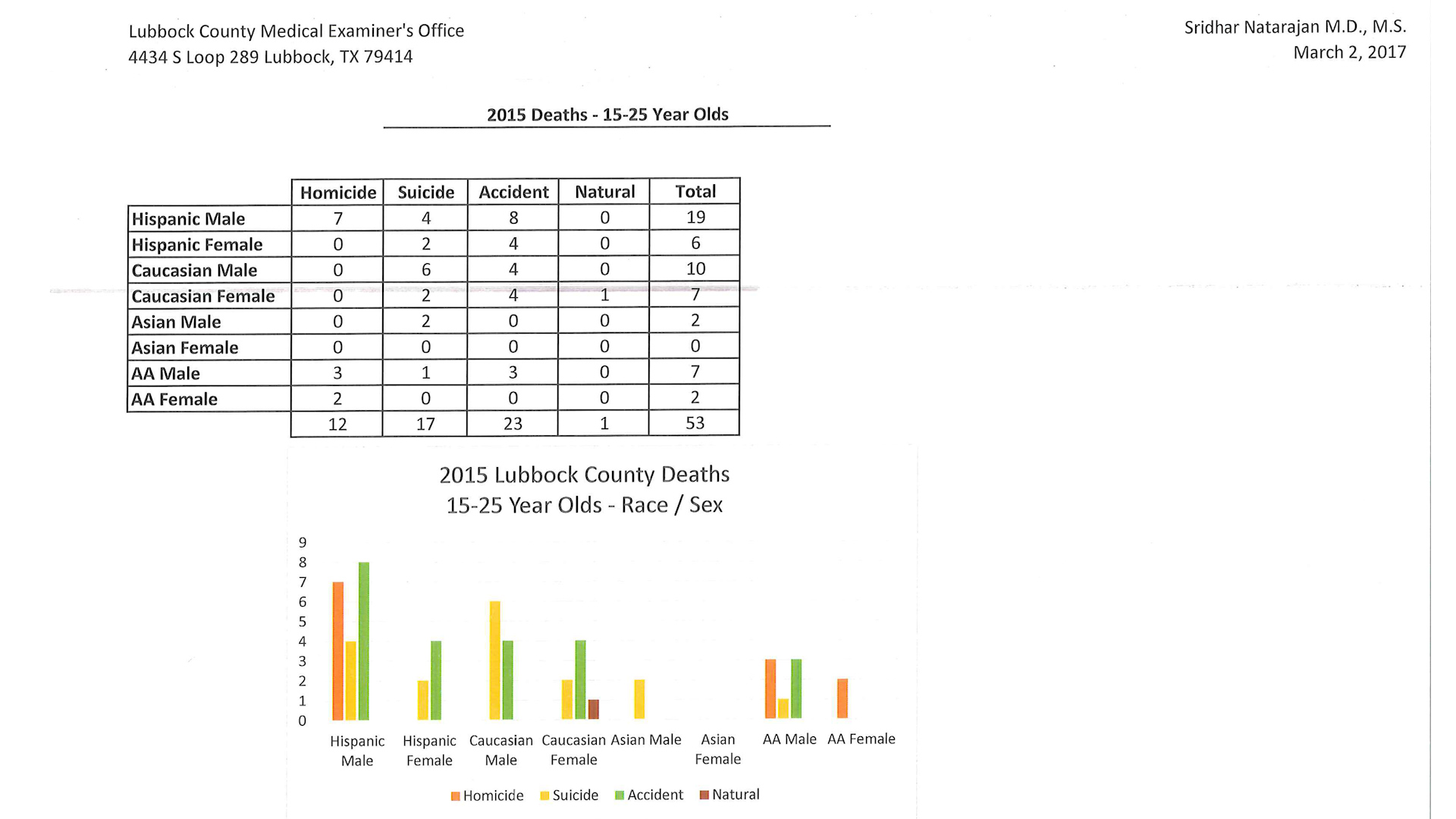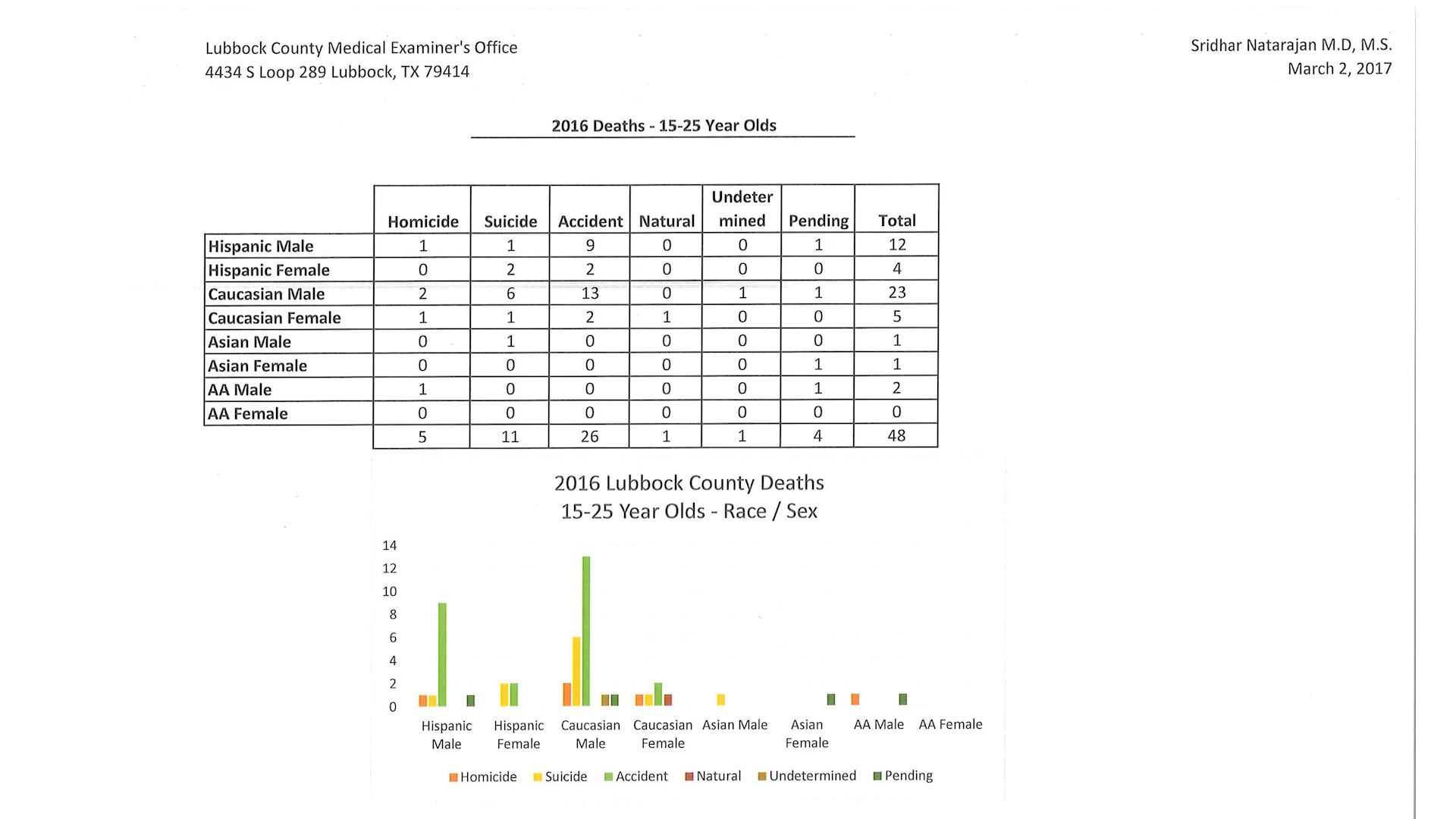Doctor Sridhar Natarajan said very little surprises him these days. He has familiarized himself with the intense nature of his job as the Lubbock County Medical Examiner. One thing that his office is diligently working on with local law enforcement, is identifying patterns in the deaths that come across his autopsy examination table.
“There’s a lot of cooperation between the law enforcement agencies, like the Lubbock Police Department, the Sheriff’s Office, and the District Attorney’s office,” he said.
EverythingLubbock.com requested the autopsy data for 2015 and 2016 on deaths of people ages 15-25. That means examinations performed in Lubbock County, though not all deaths may have occurred locally. Natarajan said some bodies come from other areas to be examined at his office.
Those results yielded 101 autopsies, 53 in 2015, and 48 in 2016. He said typically his office performs between 600 and 650 autopsies each year, equaling between 1,200 and 1,300 over a two-year period.
After reviewing the results, Natarajan said the number of “non-natural” deaths was “a bit staggering.” Of the 53 deaths of 15-25 year olds in 2015, Natarajan said only one was a natural death.
“Look at 53 and you minus the one natural and you’re at 52, just kind of as a rough estimate for that age group, 98 percent are non-natural. Then you can step back and look into what are the reasons for those non-natural deaths,” he suggested. “There may be violence involved, there may be drugs involved, there may be some sort of pedestrian or motor vehicle type of incident, and if you remove those, it may be a small number of other types.”
“There are some that a have a particular drug, but what’s more common is what we call a cocktail of drugs,” he said. “That cocktail, usually we’ll see things like could be heroin, methamphetamine, amphetamine, cocaine, you know fentanyl has been coming up on some cases.”
Records indicated that in 2015, 20 of the 53 deaths were “accidental,” with only three listed as drug-related. In 2016, 25 of the 48 deaths were “accidental,” and 12 were drug-related.
Natarajan explained that while the overall number did not change much, only by five, the causes of death and manners of death shifted.
“We do have an awareness that there’s a shift with an increase in drug deaths,” he mentioned.
“We’re talking about our community and we’re talking about 98 percent of the deaths that come to our office as being unnatural,” he said. “And by unnatural I mean it’s going to involve some sort of accident, and then if you subcategorized that by accident, it may be motor vehicle related, it may be pedestrian, it may be drug related, and it could be alcohol related.”
“That component is very preventable, but it doesn’t start on that day and things have led up to a point where that individual’s demise takes place,” he added.
“You’re talking 98% of this very important population of what’s our future generation is being lost,” Natarajan said.
He pointed to several trends, like people ingesting a “cocktail” of drugs, rather than one or two, leading to “mixed drug intoxication.”
“It seems over the period of the past 15 years, we’ve gone more to a cocktail mix than we had previously,” he mentioned.
Natarajan said his office worked closely with law enforcement in the region to prevent young people from an early demise. One way that seems to be effective is a program called Shattered Dreams, which simulates life during and after drunk driving incidents.
“The awareness about this known to our law enforcement agencies, they’re not blind to it,” Natarajan shared. “They’re examining it and looking at it very critically, as is the district attorney’s office and our office.”
The data does not include the deaths of two Texas Tech students who passed away within days of each other earlier this year. The manner of death for one of them was ruled as an accident, and the cause of death was listed as “Acute Mixed Drug Toxicity,” with alcohol, alprazolam, hydrocodone and marijuana found in his system. The other man’s death was considered “natural,” with a heart abnormality to blame.
Data provided by the Lubbock County Medical Examiner’s Office has been attached below.














